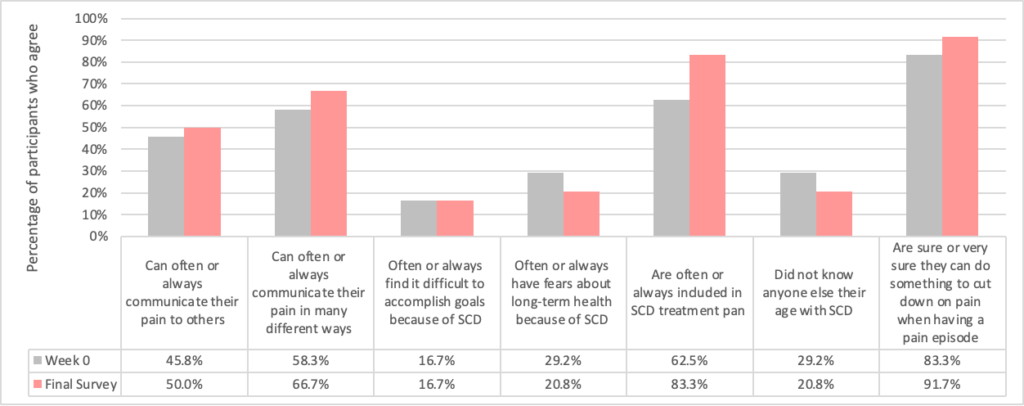Collaborator Spotlight: Utah Investigators on the #4Corners 4Health Project
Thirteen scientists from universities and NCI Comprehensive Cancer Centers in Arizona, Colorado, New Mexico, and Utah are collaborating with Dr. David Buller, Klein Buendel’s Director of Research, on the #4Corners4Health study (CA268037). This Collaborator Spotlight features the Investigators from the State of Utah.
The 4Corners study aims to aid rural emerging adults (ages 18-26 years) in making informed decisions that reduce cancer risk factors and prevent cancer later in life and help emerging adults evaluate and resist misinformation and marketing that promote cancer risk behaviors. This will be accomplished using a social media campaign designed with community advisors for diverse young adults living in rural counties in the Four Corners states (AZ, CO, NM, and UT). Social media may reach emerging adults more than interventions through other community channels (for example, clinics, schools, and workplaces) and for lower cost in the geographically dispersed, underserved rural communities in the Mountain West.
Dr. Deanna Kepka, Co-Investigator, Huntsman Cancer Institute, University of Utah
Deanna Kepka, PhD, MPH, is a Huntsman Cancer Institute research investigator and a tenured Associate Professor in the College of Nursing. Dr. Kepka is dedicated to improving the quality of primary health care services for cancer prevention and control among underserved populations locally and globally. She has specific expertise in HPV vaccination, HPV-related cancer prevention, and health equity research. She is the founder and director of the Mountain West HPV Vaccination Coalition and the Director of Global and International Health in the College of Nursing.
As a Pre-Doctoral Biobehavioral Cancer Prevention and Control Fellow at the University of Washington and Fred Hutchinson Cancer Research Center, Dr. Kepka developed a rural-focused community-based HPV vaccination intervention that included fotonovela educational pamphlets and a radionovela. These educational tools improved knowledge and sparked interest in the HPV vaccine among rural Latino parents. She also received training in epidemiological and behavioral research methods as a National Cancer Institute Cancer Prevention Post-Doctoral Fellow. As a Fellow, she received the Cancer Prevention Fellowship Merit Award. In the years since, Dr. Kepka’s work has been recognized with 20 awards for excellence at the international, national, local levels.
Dr. Echo Warner, Co-Investigator, Huntsman Cancer Institute, University of Utah
Echo Warner, Ph.D., MPH, is an Associate Member of the Huntsman Cancer Institute and an Assistant Professor in the College of Nursing. Her research targets improving cancer health outcomes and reducing cancer health disparities among adolescent and young adult cancer patients, survivors, and care partners. Dr. Warner has experience with diverse patient populations and an extensive range of methods and analytical approaches, especially in mixed-methods study designs and data integration. Her research establishes methods to study social media and online health (mis)information to improve cancer information seeking online.
Dr. David Wetter, Co-Investigator, Huntsman Cancer Institute, University of Utah
David Wetter, Ph.D., M.S., is the distinguished Jon M. and Karen Huntsman Presidential Professor, Director of the Center for Health Outcomes and Population Equity (HOPE), Senior Director for Cancer Health Equity Science, and Associate Director for Practice Engagement and Translation at the Clinical and Translational Sciences Institute at the University of Utah and Huntsman Cancer Institute. His research focuses on promoting health equity in cancer and chronic disease through translational research. Specific research topics include (a) theoretical models of health risk behaviors; (b) the development and evaluation of theoretically-based interventions; and, (c) translational research to implement and disseminate those interventions in real world settings. His work addresses populations that have been historically marginalized, with a major focus on low socioeconomic status, rural/frontier, and diverse groups. Dr. Wetter has conducted an extensive portfolio of grants funded by the National Institutes of Health over 25 years. He has published nearly 300 peer-reviewed manuscripts. His research program has received awards from the Society of Behavioral Medicine, American Society for Preventive Oncology, Society for Health Psychology, and AstraZeneca/Scientific American.

















